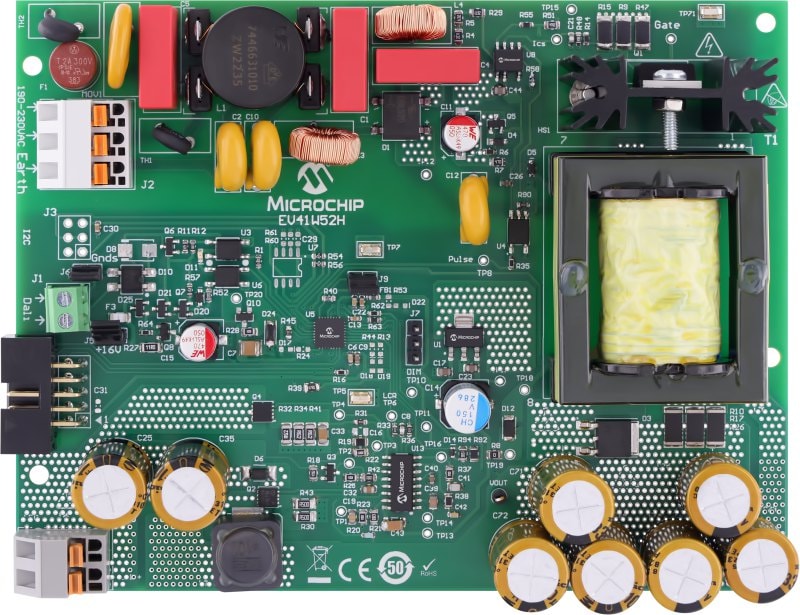The Future of Infrastructure is Smart Street Lighting
Cities shine brighter and smarter with modern energy-efficient street lighting solutions. Read this post to learn more about how we empower smart street lighting development.

What Makes Street Lighting Smart? Connectivity, Sensors and Sustainability
What makes street lighting smart? The intelligence of street lighting is made possible by the integration of communications and sensors. Communications technology such as Wi-Fi®, cellular networks and Narrowband-IoT (NB-IoT) enables a smart streetlight to connect to other devices or systems and respond in real-time to changing conditions. While sensors open many possibilities to detect motion, monitor environmental factors, noise level, traffic flow and more.
The modern features of smart street lighting, combined with environmental and sustainability benefits, make them an optimal solution for municipalities who are looking to upgrade or develop their infrastructure with a forward-thinking approach. The smart street lighting market is projected to grow significantly in the coming years, as cities implement sustainable solutions to reduce energy usage and lower costs.

Image 1: Smart street light cityscape
Regional Standards
There are municipal standards for smart street lighting that vary by region, country and city. These standards can encompass regulatory compliance such as RoHS, communication protocols, lighting efficiency and performance, sensor integration and secure data transmission. Engineers designing smart street lighting technology should work with suppliers who understand the nuances of the application and provide flexible, user-friendly solutions tailored to those needs.
Complete Smart Street Lighting Solution
Microchip offers a complete smart street lighting solution with our Street Light Smart LED Driver Reference Design and Smart Street Light Controller. This solution allows manufacturers to quickly and cost-effectively bring their products to market faster. Unlike standard, preconfigured solutions, these designs offer the flexibility to customize each driver or controller to meet specific technical requirements and standards. Both designs include a sample of industry standard intra-luminaire software demonstrating a seamlessly connected system.

Image 2: Microchip’s Smart Street Light Reference Design
Street Light Smart LED Driver Reference Design Key Features
- Maximum output power of 100W
- Input voltage from 190-265V AC
- Power factor of 0.99 at 230 VAC with 100W output
- Linear analog dimming with wide range of amplitude control of the LED current
- Pulse Width Modulation (PWM) digital dimming
- Flyback converter control adjusts output voltage for maximum efficiency
- Fully customizable, extensively tested and validated for reliability
Smart Street Light Controller Key Features
- Cost-effective street light controller design featuring industry-standard intra-luminaire connectivity
- Fully customizable to ensure compatibility with multiple smart city communications protocols
- Remotely control functions like on/off and dimming value are achieved via AWS cloud connection
In addition to the design files, Microchip can provide hardware or Bill of Materials (BOM) including the MCP1792 Low-Drop Voltage Regulator (LDO), ATSAMD21E18 MCU, MCP1012 Primary-Side Auxiliary Start-up IC, HV96001 Secondary Micro-Interface LED Controller, 16 Kb EERAM, PIC32CXG61 MPU, MCP1727 Power Module and AT24MAC402. To learn more about the smart street lighting solutions, visit the Street Light Smart LED Driver Reference Design and Smart Street Light Controller web pages.

Image 3: LED Smart Street Light Evaluation Board
Smart street lighting offers cities a modern, energy-efficient solution to traditional lighting systems. By using LED technology and remote management, smart lighting reduces energy consumption and maintenance costs. The integration of communications and sensors with other smart city systems, such as those used to monitor traffic and environmental conditions, enhances urban planning and sustainability.
Microchip’s Sustainability Solutions
Microchip is committed to developing innovative sustainability solutions that support our customers’ efforts to reduce greenhouse gas emissions, promote energy efficiency, optimize resources and reduce waste. Learn more about our sustainability solutions.